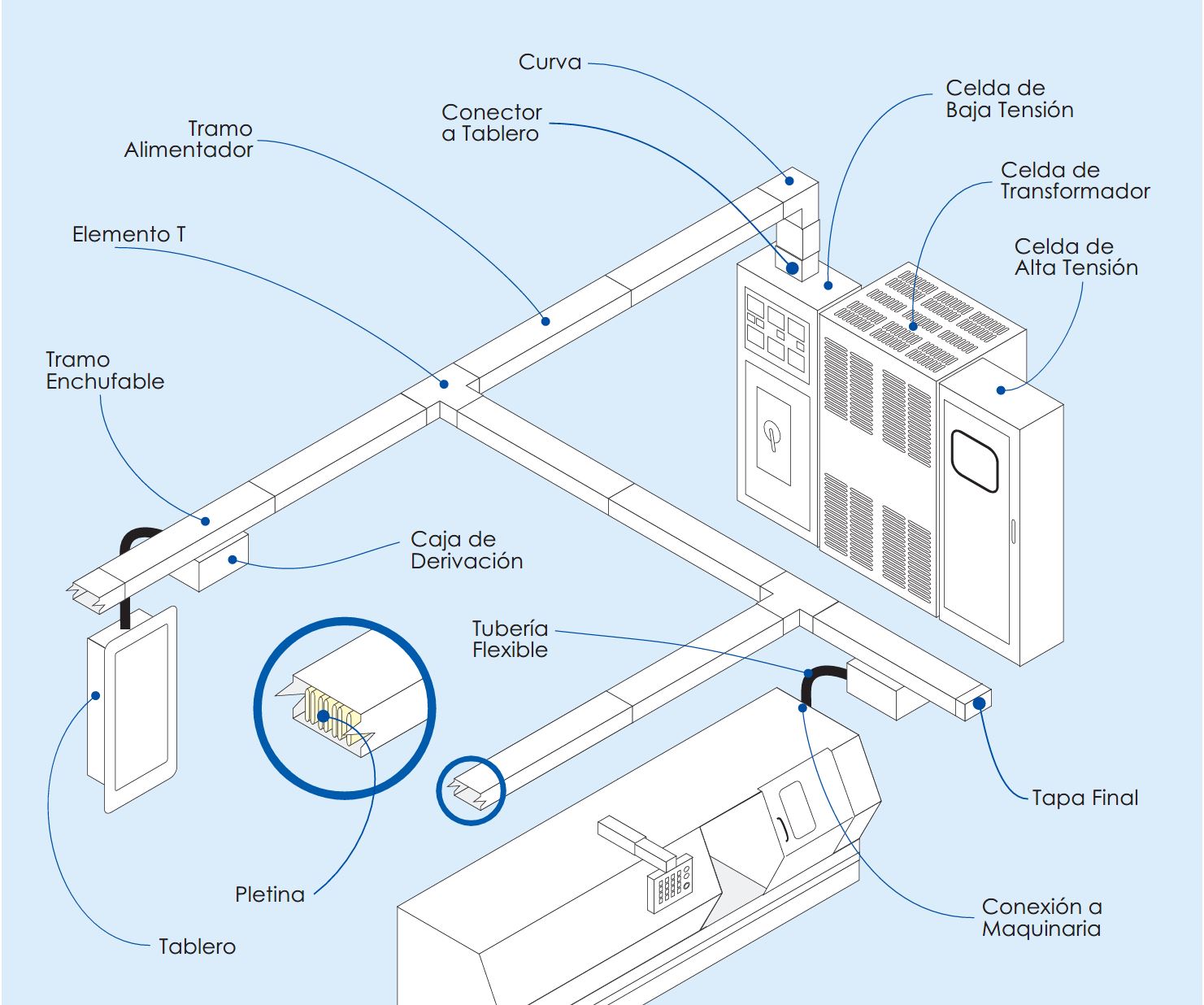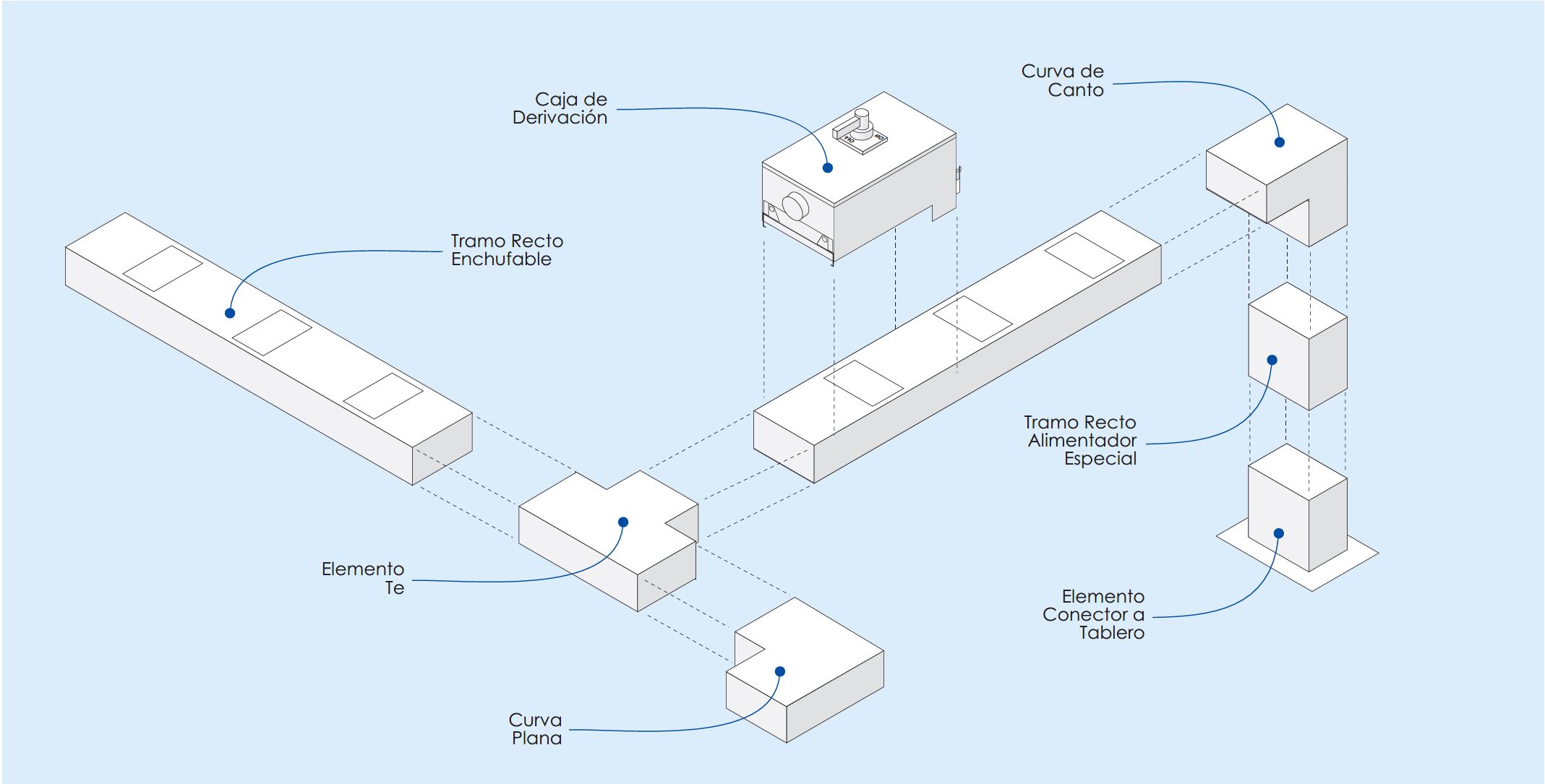Busway works like an economic, versatile, and compact substitute to traditional power cable feeders. Its pre-fabricated modular structure allows for the installation of power distribution systems that adapt to the particular needs of each building, industry, etc. Busway’s main advantages are:
To view a busway distribution example video in a building, click here.
Economy
Busway projects can cost up to 50% less than a similar cable and pipe installation. Additionally, maintenance and expansion/modification costs are greatly reduced since the equipment is easy to install/uninstall in a new configuration.
Efficiency
In general, they are more efficient than cable due to the considerable reduction of skin and proximity effects. However, Electbus’ DTU busway has a superior efficiency performance than regular busways due to its paired phase design. For further technical details, click here.
Esthetics
Since busway is one centralized equipment from which loads feed, it has broad esthetic advantages to a bunch of pipes, trays and cables that run without order and can be difficult to hide thus compromising the architectural esthetics of the project. On the contrary, busways can be left visible or highlighted as an esthetic feature of modern architecture.
Reduced time and space
Installation can take up to 70% less time than its cable and pipe equivalent, because all the pieces are pre-fabricated and very easy to connect in a sequential manner. Furthermore, the cross-section of busway can be up to 50% smaller than that of cable (for equal or similar ampacity).
Safety and reliability
Busway equipment is disposed with several levels of protection against short circuit faults and the fires that these can cause. Its energized bus bars are insulated with powdered epoxy material of normalized thickness. Moreover, the whole group of bus bars is protected by a metallic housing which in turn is also coated for added protection. For added dependence, busways are manufactured according to international standards (NEMA and UL).
Las electrobarras funcionan como un sustituto económico, versátil y compacto a los cables de potencia tradicionales. Su estructura modular pre-fabricada permite instalar sistemas de distribución que se adapten a las necesidades particulares de cada edificación, industria, etc. Sus principales ventajas son:
Para visualizar un video de una S/E con electrobarras, haga click aquí.
Economía:
Las electrobarras pueden reducir el costo en un 50% vs. una instalación similar con cable. Adicionalmente, los costos de mantenimiento y expansión tambien son reducidos significativamente.
Eficiencia:
En general, son más eficientes que los cables ya que minimizan el efecto pelicular y el efecto proximidad. Adicionalmente, el modelo DTU de Electbus posee beneficios adicionales debido a su diseño de fase pareada. Para mayor detalle técnico. Para mayor detalle técnico, haga click aquí.
Estética:
Como se trata de un solo equipo centralizado, posee amplios beneficios estéticos contra una gran cantidad de cables, tuberías, bandejas, etc. ubicados desordenadamente.
Economía de Tiempo y Espacio:
La instalación puede demorar hasta 70% menos que su equivalente en cable, ya que las piezas pre-fabricadas son muy fáciles de conectar de forma secuencial. Adicionalmente, ocupan hasta un 50% menos espacio que un sistema en cable.
Seguridad y confiabilidad:
Disponen de varios niveles de protección sumamente robustos contra fallas de corto-circuito y los incendios que estos ocasionan. Las pletinas energizadas se encuentra aisladas mediante epoxi aplicado electrostáticamente. Adicionalmente, el conjunto completo se encuentra protegido por una carcasa metálica contra impactos y objetos. Las electrobarras son fabricadas acorde a las especificaciones de las normas aplicables (NEMA y UL) para mayor confiabilidad.




